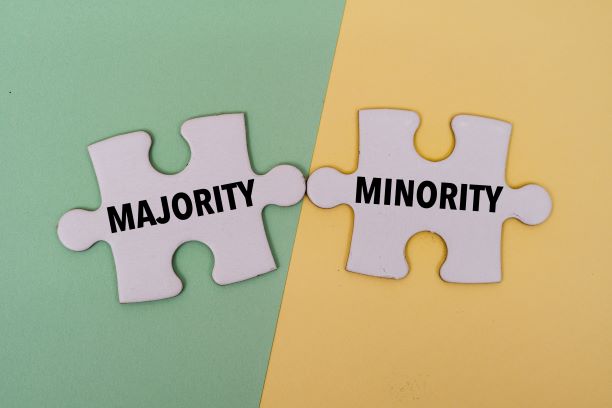When The Playground Bully Becomes an Adult Workplace Bully
When The Playground Bully Becomes an Adult Workplace Bully
The recent high-profile example of bullying in the workplace comes from the National Football League and the Miami Dolphins. Reports recently surfaced that Richie Incognito harassed and bullied his teammate, Jonathan Martin, a fellow offensive lineman. The alleged bullying included voicemails and text messages with numerous racial epithets, profanities, threats of violence, and derogatory terms referencing sexual orientation. Incognito was a member of the team’s leadership council and has been suspended. Martin has temporarily left the team after teammates pulled a prank in the team cafeteria, and he has accused the franchise of having an unsafe work environment. It is not clear what role management, the coaching staff, or the rest of the team played in the harassment, but there is a report that members of the coaching staff encouraged Incognito to “toughen up” Martin. While it is highly unlikely that this behavior was unnoticed, many employees treat workplace bullying like the children’s character “Not Me.” It may be happening somewhere, but not here.
The heavy media coverage and attention given to the bullying in the Miami Dolphins’ locker room brings to light an issue that is far too common in the workplace. Research commissioned by the Workplace Bullying Institute (WBI) and conducted by Zogby International brings to light the prevalence of bullying in today’s workplaces, reporting that “35 percent of the US workforce (an estimated 53.5 million Americans) report being bullied at work; an additional 15 percent witness it. Half of all Americans have directly experienced it.” Bullies share common characteristics and are typically subservient to individuals higher in the organization while bullying peers and people who report to them. Males are more likely to exhibit aggressive behavior than women, but females have also bullied co-workers, typically towards other women. The situation is exacerbated when high-profile bullies find success and fame. Forbes.com posted a “Bully Bosses of Fame” that included Steve Jobs of Apple and Vogue Editor in Chief, Anna Wintour, the inspiration for the best-selling novel and hit movie “The Devil Wears Prada.” The success of bullies only serves to breed more bullies as younger workers emulate the style of those in authority.
A workplace becomes a “hostile work environment” when an employee experiences insulting, intimidating conduct because of the employee’s gender, race, national origin, disability, religion, or other protected class status. See e.g., Smith v. Lockheed Martin, 644 F.3d 1321 (11th Cir., 2011). Disruptive workplace behavior such as bullying may not rise to the level of a “hostile working environment,” and may not even be legally actionable. However, employers should not overlook this behavior and the disruptions it can cause to a work environment.
While related to harassment, discrimination, and stalking, bullying differs in that it is not typically focused on race, gender, or disability. There is not a clear definition of a “workplace bully,” but it has been referenced in court opinions. In Yancick v. Hanna Steel Corporation (7th Cir., Aug. 3, 2011), the court declined to accept bullyingas harassment but specifically used the term in the opinion.The court described the “workplace bully” as “confrontational,rude and disruptive in the workplace.” Bullying behaviors include all of the following:
· Being rude and disrespectful;
· Resorting to name-calling and yelling;
· Making insulting remarks or giving people the silent treatment;
· Issuing threats of a job loss or assigning unreasonable tasks;
· Constantly highlighting employees’ mistakes and criticizing their work;
· Ignoring or excluding employees and spreading rumors;
· Engaging in verbal or physical aggression and arguments;
· Commenting or making jokes about a person’s appearance, lifestyle or background;
· Engaging in social isolation or retaliation; and
· Tampering with personal effects or work materials.
The Miami Dolphins’ case appears to involve many of the above behaviors and examples, including the name-calling, insulting remarks, aggression, and comments about a person’s background. Of particular note, Martin comes from a mixed racial background and both of his parents attended Harvard, somewhat atypical of most professional football players. Reports also indicate that Martin was nicknamed “the Big Weirdo” by his teammates and was coerced to help fund a trip to Las Vegas for some of his teammates that he did not attend.
Much of the reporting in the Miami Dolphins case is now focused on what the coaching staff knew, and whether Martin reported any of the bullying to the coaches or to management. The team released a statement that Martin had not reported any concerns to the team regarding bullying until after he left the team. Part of the problem is that most bullies do not exhibit the aggressive behavior in front of their superiors. In order to identify bullying behavior in the workplace, management should pay attention to reports from other employees. Signs of bullying include an individual frequently taking credit for shared accomplishments and ignoring a person’s requests to be included in meetings. High turnover rates within a department can also be a sign of bullying. Management can take extra steps to identify problems by conducting 360-degree performance reviews that include reviews from subordinates, peers, and supervisors. They can also conduct exit interviews with employees to find out how individuals were treated by co-workers.
Bullying can also be an issue of perspective and point-of-view. Several Miami players have come out in support of Incognito, saying that he did not treat Martin differently than other players and that Martin was never singled out as a target. The difficulty lies in that Martin perceived the actions as bullying, and he was negatively affected by Incognito’s actions. If the bullying negatively affects an employee, intent no longer matters, and management must concern itself with the consequences of the bullying.
Workplace bullying takes a serious toll on the victims of the behavior and the business as a whole. Victims frequently suffer from mental health problems such as stress, fatigue, anxiety, depression, panic attacks, and physical health problems such as reduced immunity to infection, skin irritations, high blood pressure, headaches, and migraines. Businesses face higher turnover, lost work time, lower efforts, and lower commitment to the organization. A business can also suffer great harm to its reputation as word gets around about the workplace environment. The consequences can even grow into a lawsuit against the business. While there are no laws explicitly governing workplace bullying, it can be seen as a form of violence against employees if it includes threats. Victims who are members of a protected class could easily use the bullying in a discrimination claim.
The NFL has come under fire recently for its lack of an anti-hazing policy, especially when compared to the U.S. Marines, another organization with a reputation for “toughness,” who instituted an anti-hazing policy in 1997. All employers can take steps to prevent bullying in the workplace by developing firm policies and educating employees. Perhaps even more importantly, a positive workplace environment should start at the highest level, with management showing respect and creating an encouraging, supportive atmosphere. The education process should include training provided to all employees. Employees should be aware that aggressive behavior is not acceptable. Employees should also be able to report incidents without fear of retribution.
Employers should attempt to recognize and address bullying behavior immediately, beginning with the hiring process and watching a candidate interact with all of the staff. When bullying behavior is recognized or reported in the workplace, the offender must be pulled aside and informed that the behavior is unacceptable. Employers must communicate the specifics of how and why the behavior is unacceptable and that it must cease. Employers need a disciplinary policy that it should apply consistently to all cases. Employers should also document the behaviors and warnings, along with the employee’s responses to all discussions. Employers should take proactive measures while it still has the chance to manage the matter, before the behavior grows beyond their control and into a lawsuit.






